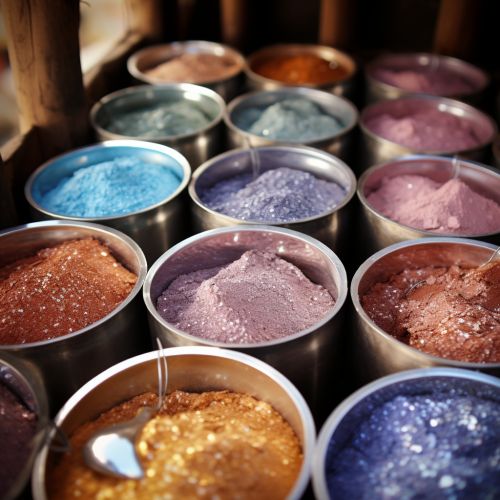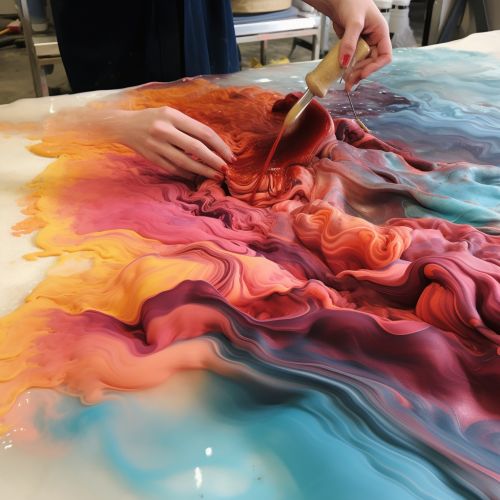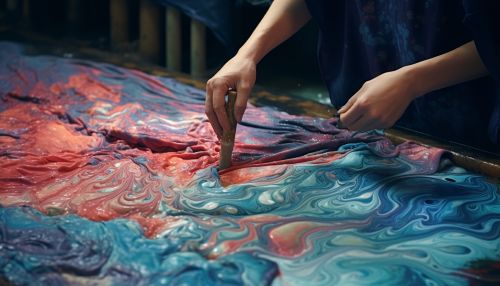Mordant
Introduction
A mordant is a substance used in dyeing and printing that reacts chemically with both a dye and the material being dyed to help hold the dye permanently. Mordants are often metallic salts that form coordination complexes with the organic dyes. The use of mordants in dyeing allows the dyes to bind with the fibers of the material, making the dye insoluble and thus permanent. Dyeing processes without mordants are called direct dyeing.


History
The use of mordants in dyeing has a long history, with evidence of their use dating back to the ancient civilizations of Egypt and China. The term "mordant" comes from the Latin word "mordere", which means "to bite". This is in reference to the way the mordant 'bites' into the fabric to allow the dye to adhere more effectively.
Types of Mordants
There are several types of mordants used in the dyeing process. These include:
Metallic Mordants
Metallic mordants are the most commonly used mordants in dyeing. They include substances such as alum, iron, copper, and tin. These metallic salts form coordination complexes with the dye, which then bonds to the fabric.


Tannin Mordants
Tannin mordants are derived from plants and are often used in conjunction with metallic mordants. Tannins are polyphenolic compounds that can bind with proteins and cellulose, making them effective mordants.
Oil Mordants
Oil mordants are less commonly used, but can be effective for certain types of dyes. They are typically used for dyeing synthetic fibers.
Mordanting Process
The mordanting process involves several steps. First, the material to be dyed is thoroughly cleaned to remove any oils, dirt, or other substances that could interfere with the dyeing process. The material is then soaked in a solution of the mordant. The length of time the material is soaked in the mordant solution can vary, but it is typically several hours to several days. The material is then rinsed and ready to be dyed.


Environmental Impact
The use of mordants in dyeing has significant environmental implications. Many mordants, particularly metallic mordants, are toxic and can be harmful to the environment if not properly disposed of. In addition, the mordanting process uses large amounts of water, which can contribute to water pollution if the mordant-laden water is not properly treated.
Safety
Due to the toxic nature of many mordants, safety is a significant concern in the dyeing process. It is important to use appropriate safety equipment, including gloves and eye protection, when handling mordants. In addition, mordants should be used in a well-ventilated area to prevent inhalation of harmful fumes.
